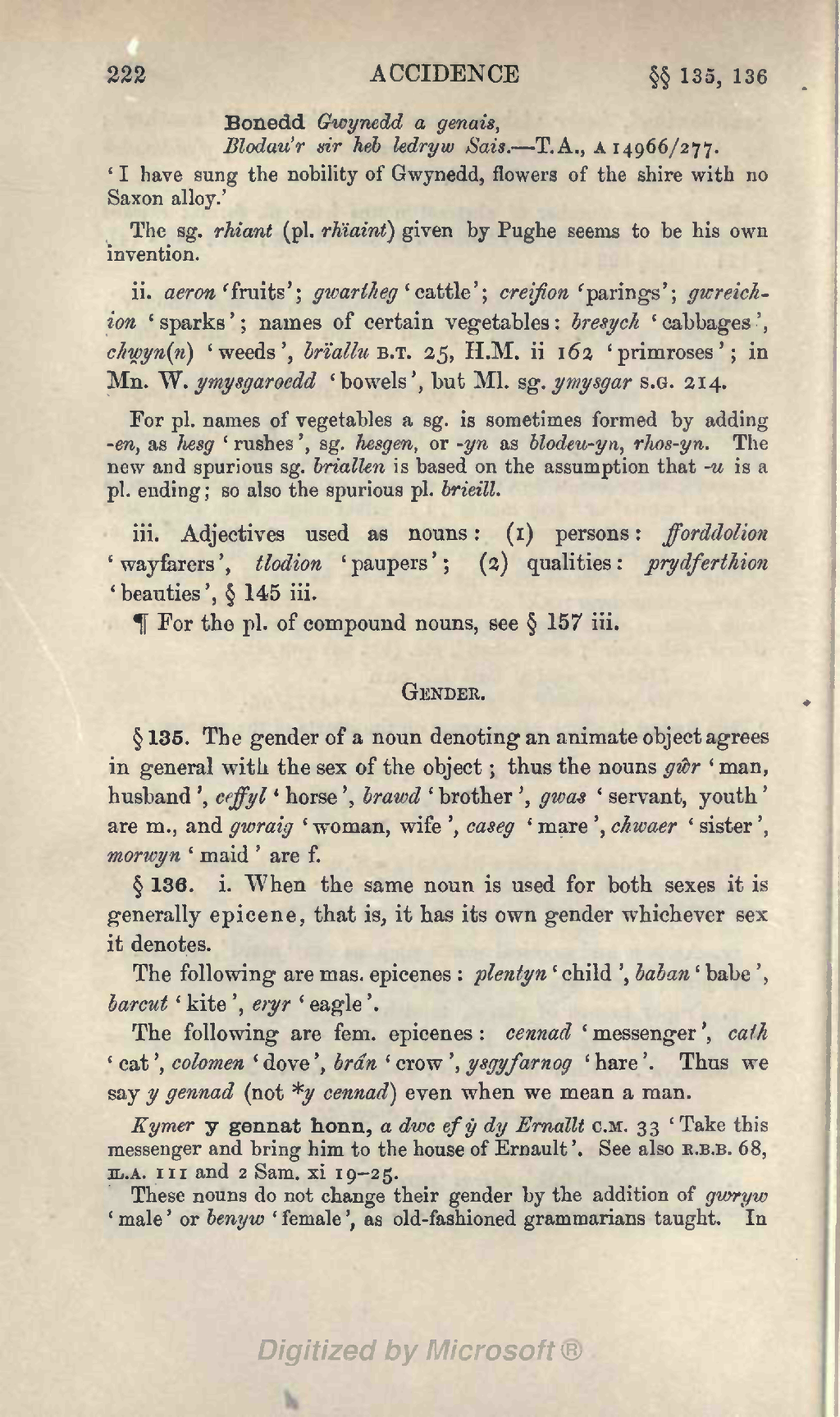- Bonedd Gwynedd a genais,
- Blodau’r sir heb ledryw Sais.—T.A., a 14966/27 7.
‘I have sung the nobility of Gwynedd, flowers of the shire with no Saxon alloy.’
The sg. rhiant (pl. rhïaint) given by Pughe seems to be his own invention.
ii. aeron ‘fruits’; gwartheg ‘cattle’; creifion ‘parings’; gwreichion ‘sparks’; names of certain vegetables: bresych ‘cabbages’, chw̯yn(n) ‘weeds’, brïallu b.t. 25, H.M. ii 162 ‘primroses’; in Mn. W. ymysgaroedd ‘bowels’, but Ml. sg. ymysgar s.g. 214.
For pl. names of vegetables a sg. is sometimes formed by adding ‑en, as hesg ‘rushes’, sg. hesgen, or ‑yn as blodeu-yn, rhos-yn. The new and spurious sg. briallen is based on the assumption that ‑u is a pl. ending; so also the spurious pl. brieill.
iii. Adjectives used as nouns: (1) persons: fforddolion ‘wayfarers’, tlodion ‘paupers’; (2) qualities: prydferthion ‘beauties’, § 145 iii.
¶ For the pl. of compound nouns, see § 157 iii.
Gender.
§ 135. The gender of a noun denoting an animate object agrees in general with the sex of the object; thus the nouns gŵr ‘man, husband’, ceffyl ‘horse’, brawd ‘brother’, gwas ‘servant, youth’ are m., and gwraig ‘woman, wife’, caseg ‘mare’, chwaer ‘sister’, morwyn ‘maid’ are f.
§ 136. i. When the same noun is used for both sexes it is generally epicene, that is, it has its own gender whichever sex it denotes.
The following are mas. epicenes: plentyn ‘child’, baban ‘babe’, barcut ‘kite’, eryr ‘eagle’.
The following are fem. epicenes: cennad ‘messenger’, cath ‘cat’, colomen ‘dove’, brân ‘crow’, ysgyfarnog ‘hare’. Thus we say y gennad (not *y cennad) even when we mean a man.
Kymer y gennat honn, a dwc ef ẏ dy Ernallt c.m. 33 ‘Take this messenger and bring him to the house of Ernault’. See also r.b.b. 68, Ỻ.A. 111 and 2 Sam. xi 19–25.
These nouns do not change their gender by the addition of gwryw ‘male’ or benyw ‘female’, as old-fashioned grammarians taught. In